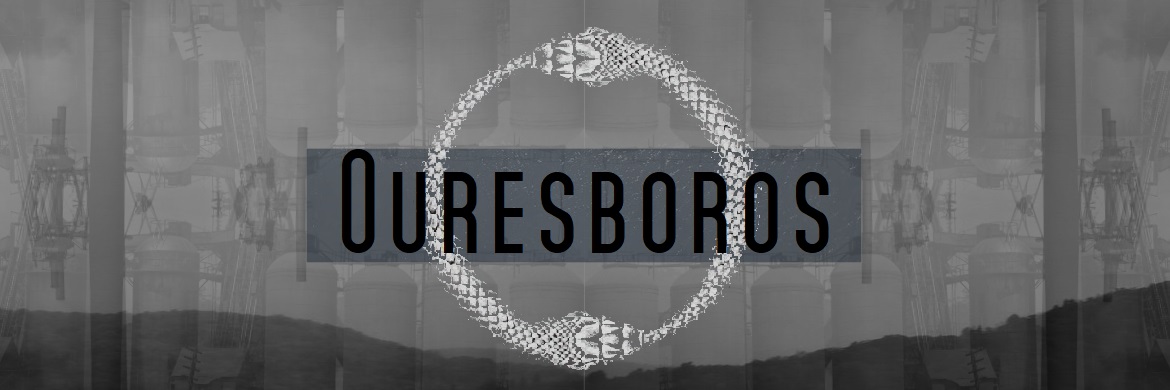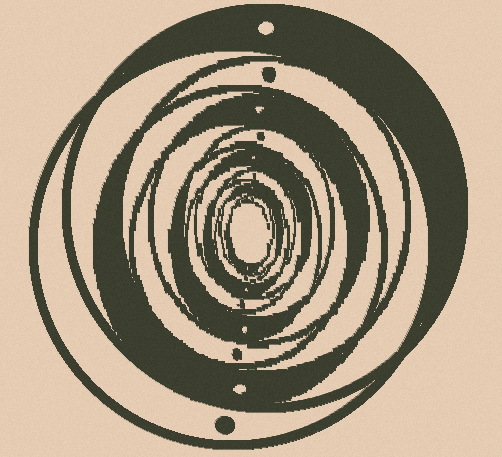Ouresboros
Ouresboros is not a singular mythical creature, it is in fact two. It represents two snakes or reptiles that eternally try to eat each other and thus stay in a continuous chase. The story of these two creatures is found across many seemingly different unconnected cultures. While the name and the stories differ, the description of these reptile like creatures bound in an eternal struggle remains the same.
Ouresboros, means "devouring of tails" and finds its origin in the ancient Hadrisan language. 'Oraa' meaning 'tails' ('Ora' singular) and 'bor' meaning 'consume'
In Hadrisan mythology there is the story of two giant worms, who are burrowed deep within the ground. They are consumed by the desire to eat each other and thus try to continuously swallow each other whole. Mountains are said to be created when they try to wiggle loose. Earthquakes are caused when a tail snaps from the other one its grasp.
Due to encompassing spread of this story, Ouresboros also lends its name to this planet. Representing both the circular motion the planet makes, as the overall connexion between the various cultures of the world.
The first known recorded story, referring to the twin snakes is found in the works of Escoplae. One book describes the origin of the world and its end. Here Escoplae writes about the duality of Khalkhelas/ Khelaskhal. The creatures are seen as being both responsible for the creation of the world and responsible for the end of it. They also represent various traits Escoplae observes in other people.
Brengrein
According to stories from the upper North-Imelian regions, Breng and Grein are two mythical worldsnakes. Each roving about on its own side of the great worldroot. Should they one day, see each other, they would get literally entwined in a great struggle. This struggle would herald the inevitable end of time.
In other cultures
Khalkhelas/ KhelaskhalThe first known recorded story, referring to the twin snakes is found in the works of Escoplae. One book describes the origin of the world and its end. Here Escoplae writes about the duality of Khalkhelas/ Khelaskhal. The creatures are seen as being both responsible for the creation of the world and responsible for the end of it. They also represent various traits Escoplae observes in other people.
At the dawning, the two brothers emerged from their eggs. They saw they were without others and they were just with each other. "I am Khal, for I rule this realm" declared one. "I am Khelas, for I own this realm" declared the other quickly. Soon they both noticed that their realm was finit and that they had to either share it or dominate each other. The brothers could not understand the thought of sharing, thus they attacked. Khal snapped at Khelas tail, Khelas lunged at Khal's. Both were quick enough to evade each others bite , neither were fast enough to catch up to the other and none were brave enough to turn and face the other head on. Thus commenced the eternal chase of Khal and Khelas and the ever continuing rolling circle.
Escoplae continues with describing how over time, dirt and then water would cover the two brethren. Thus creating the world. From their shed scales plants and other animals would sprout. Thus creating life.
It concludes with the warning, that should either brother manage to consume the other, the chase would end and the world would then stop rotating and parts would collaps, bringing great cataclysms.




Comments